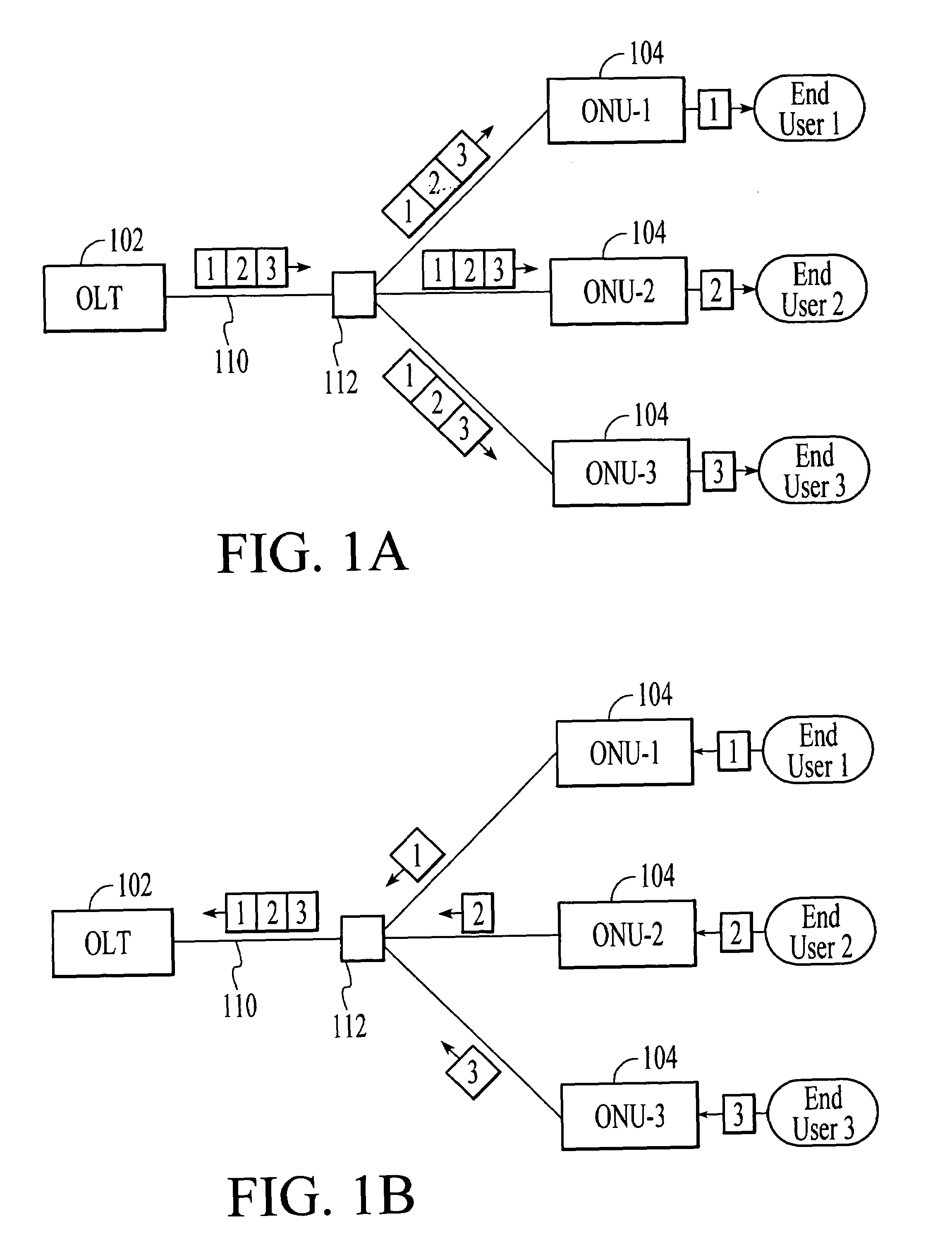Point-to-multipoint passive optical network that utilizes variable-length packets
a passive optical network and variable-length packet technology, applied in the field of broadband optical communication networks, can solve the problems of large overhead that consumes valuable bandwidth, specialized hardware adds additional cost to the olt and onus, and time-consuming process of converting ip datagrams into atm cells, etc., to reduce transmission overhead and remove distance limitations.
- Summary
- Abstract
- Description
- Claims
- Application Information
AI Technical Summary
Benefits of technology
Problems solved by technology
Method used
Image
Examples
Embodiment Construction
[0034]A system and method for point-to-multipoint communications involves a PON in which downstream data is transmitted from an OLT to multiple ONUs in variable-length packets and in which upstream data is transmitted from the ONUs to the OLT in variable-length packets utilizing time division multiplexing to avoid transmission collisions. In an embodiment, the downstream and upstream variable-length packets are formatted according to the IEEE 802.3 standard and the payload of the variable-length packets includes an IP datagram. In an embodiment, the length of each variable-length packet is related to the length of the IP datagram that is included in the payload of each variable-length packet. Utilizing variable-length packets instead of fixed-length ATM cells to transmit IP datagrams reduces the transmission overhead when compared to an ATM-based point-to-multipoint PON. In addition, utilizing time division multiplexing to avoid upstream transmission collisions removes the distance ...
PUM
 Login to View More
Login to View More Abstract
Description
Claims
Application Information
 Login to View More
Login to View More - R&D
- Intellectual Property
- Life Sciences
- Materials
- Tech Scout
- Unparalleled Data Quality
- Higher Quality Content
- 60% Fewer Hallucinations
Browse by: Latest US Patents, China's latest patents, Technical Efficacy Thesaurus, Application Domain, Technology Topic, Popular Technical Reports.
© 2025 PatSnap. All rights reserved.Legal|Privacy policy|Modern Slavery Act Transparency Statement|Sitemap|About US| Contact US: help@patsnap.com



